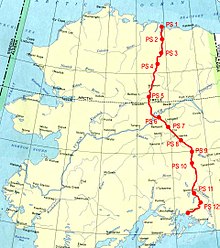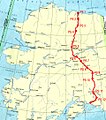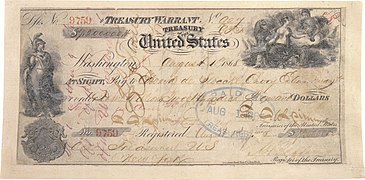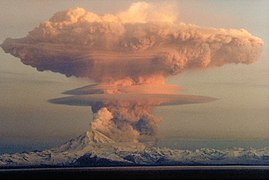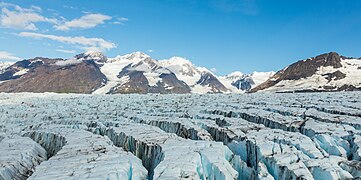Portal:Alaska
 Introduction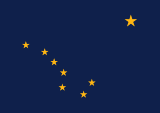   Alaska (/əˈlæskə/ ə-LASS-kə) is a non-contiguous U.S. state on the northwest extremity of North America. It is in the Western United States region. To the east, it borders Canada (the Yukon territory and the province of British Columbia). It shares a western maritime border, in the Bering Strait, with Russia's Chukotka Autonomous Okrug. The Chukchi and Beaufort Seas of the Arctic Ocean lie to the north and the Pacific Ocean lies to the south. Technically a semi-exclave of the U.S., it is the largest exclave in the world. Alaska is the largest U.S. state by area, comprising more total area than the next three largest states of Texas, California and Montana combined, and is the seventh-largest subnational division in the world. It is the third-least populous and most sparsely populated U.S. state, but is, with a population of 736,081 as of 2020, the continent's most populous territory located mostly north of the 60th parallel, with more than quadruple the combined populations of Northern Canada and Greenland. The state contains the second-largest and largest cities in the United States by area: the state capital of Juneau, and its former capital, Sitka, respectively. The state's most populous city is Anchorage and approximately half of Alaska's residents live within its metropolitan area. Indigenous people have lived in Alaska for thousands of years, and it is widely believed that the region served as the entry point for the initial settlement of North America by way of the Bering land bridge. The Russian Empire was the first to actively colonize the area beginning in the 18th century, eventually establishing Russian America, which spanned most of the current state, and promoted and maintained a native Alaskan Creole population. The expense and logistical difficulty of maintaining this distant possession prompted its sale to the U.S. in 1867 for US$7.2 million (equivalent to $157 million in 2023). The area went through several administrative changes before becoming organized as a territory on May 11, 1912. It was admitted as the 49th state of the U.S. on January 3, 1959. Abundant natural resources have enabled Alaska—with one of the smallest state economies—to have one of the highest per capita incomes, with commercial fishing, and the extraction of natural gas and oil, dominating Alaska's economy. U.S. Armed Forces bases and tourism also contribute to the economy; more than half the state is federally-owned land containing national forests, national parks, and wildlife refuges. It is among the most irreligious states, one of the first to legalize recreational marijuana, and is known for its libertarian-leaning political culture, generally supporting the Republican Party in national elections. The Indigenous population of Alaska is proportionally the second highest of any U.S. state, at over 15 percent, after only Hawaii. (Full article...) Entries here consist of Good and Featured articles, which meet a core set of high editorial standards.
The Trans-Alaska Pipeline System (TAPS) is an oil transportation system spanning Alaska, including the trans-Alaska crude-oil pipeline, 12 pump stations, several hundred miles of feeder pipelines, and the Valdez Marine Terminal. TAPS is one of the world's largest pipeline systems. The core pipeline itself, which is commonly called the Alaska pipeline, trans-Alaska pipeline, or Alyeska pipeline, (or The pipeline as referred to by Alaskan residents), is an 800-mile (1,287 km) long, 48-inch (1.22 m) diameter pipeline that conveys oil from Prudhoe Bay, on Alaska's North Slope, south to Valdez, on the shores of Prince William Sound in southcentral Alaska. The crude oil pipeline is privately owned by the Alyeska Pipeline Service Company. Oil was first discovered in Prudhoe Bay in 1968 and the 800 miles of 48" steel pipe was ordered from Japan in 1969 (U.S. steel manufacturers did not have the capacity at that time). However, construction was delayed for nearly 5 years due to legal and environmental issues. The eight oil companies that owned the rights to the oil hired Bechtel for the pipeline design and construction and Fluor for the 12 pump stations and the Valdez Terminal. Preconstruction work during 1973 and 1974 was critical and included the building of camps to house workers, construction of roads and bridges where none existed, and carefully laying out the pipeline right of way to avoid difficult river crossings and animal habitats. Construction of the pipeline system took place between 1975 and 1977. It was important for the United States to have a domestic source of oil to offset the high rise in foreign oil and the Alaska Pipeline fulfilled that obligation. Building oil pipelines in the 1950s and 60s was not difficult in the contiguous United States. However, in building the Alaska Pipeline, engineers faced a wide range of difficulties, stemming mainly from the extreme cold and the difficult, isolated terrain. The construction of the pipeline was one of the first large-scale projects to deal with problems caused by permafrost, and special construction techniques had to be developed to cope with the frozen ground. The project attracted tens of thousands of workers to Alaska due to high wages, long work hours, and paid-for housing, causing a boomtown atmosphere in Valdez, Fairbanks, and Anchorage. (Full article...)TopicsCategoriesSelected article -
Ice Road Truckers (commercially abbreviated IRT) is a reality television series that aired on History Channel from 2007 to 2017. It features the activities of drivers who operate trucks on ice roads crossing frozen lakes and rivers, in remote territories in Canada and Alaska. Seasons three to six also featured Alaska's improved but still remote Dalton Highway, which is mainly snow-covered solid ground. (Full article...)
Selected picture -General imagesThe following are images from various Alaska-related articles on Wikipedia.
Recognized content
Featured articlesGood articles
Featured pictures
Former featured pictures
Related Portals
Related WikiProjectsState facts
State symbols:
Tasks
Associated WikimediaThe following Wikimedia Foundation sister projects provide more on this subject:
Discover Wikipedia using portals |

